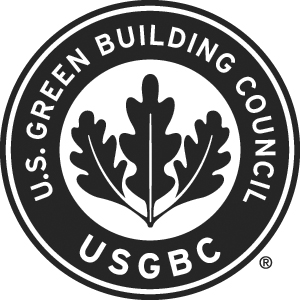 What are LEED Professional Credentials?
What are LEED Professional Credentials?
The LEED Professional Credentials were developed to encourage green building professionals to maintain and advance their knowledge and expertise. A LEED Professional Credential provides employers, policy makers, and other stakeholders with assurances of an individual’s current level of competence and is the mark of the most qualified, educated, and influential green building professionals in the marketplace. All the LEED Professional Credentials require adherence to the LEED Professional Disciplinary and Exam Appeals Policy and require ongoing credential maintenance requirements either through continuing education and practical experience or through biennial retesting. Starting in 2009, newly credentialed individuals must maintain their credential on a two-year cycles; if not, they expire.There are three tiers in the LEED Professional Credentialing program:
- Tier 1: LEED Green Associate
- Tier 2: LEED AP (with specialty)
- Tier 3: LEED Fellow
LEED Green Associate
For professionals who want to demonstrate green building expertise in non-technical fields of practice, GBCI has created the LEED Green Associate credential, which denotes basic knowledge of green design, construction, and operations.
The eligibility requirements for the LEED Green Associate exam are to have experience in the form of EITHER documented involvement on a LEED-registered project OR employment (or previous employment) in a sustainable field of work OR engagement in (or completion of) an education program that addresses green building principles. Candidates are also required to agree to the Disciplinary and Exam Appeals Policy and Credential Maintenance Program and submit to an application audit.
The LEED Green Associate exam consists of 100 randomly delivered questions which must be completed in 2 hours. The content of the exam focuses on the LEED project process (including integrated design), core sustainability concepts, green building terminology, and various aspects of the LEED rating systems.
The LEED AP (Accredited Professional) credential will continue to signify an advanced depth of knowledge in green building practices; it also will reflect the ability to specialize in a particular LEED Rating System. The LEED AP exam is divided into two parts. The first part is the LEED Green Associate exam, which demonstrates general knowledge of green building practices. The second part is a specialty exam based on one of the LEED Reference Guides.
The specialties are:
- LEED AP Building Design + Construction
- LEED AP Homes
- LEED AP Interior Design + Construction
- LEED AP Neighborhood Development
- LEED AP Operations + Maintenance
The LEED AP exams consist of two parts, the LEED Green Associate exam and the applicable LEED AP specialty exam; each part contains 100 randomly delivered multiple choice questions and each part must be completed in 2 hours. Individuals must score at least 170 out of 200 in order to pass. While the LEED Green Associate focuses on concepts and terminology, the LEED AP with Specialty exam tests a candidate's in-depth understanding of one of the five main rating system categories. Candidates have to memorize performance thresholds (percentages of energy savings for example) and perform calculations during the exam.
LEED Fellow
GBCI reports that there will be a credential known as LEED Fellow, representing a higher tier of credential than LEED Accredited Professional. The application process is currently under development, this credential will distinguish an extraordinary class of leading professionals. LEED Fellows contribute to the standards of practice and body of knowledge for achieving continuous improvement in the green building field. As of March 2011, the LEED Fellow program is currently in its first stage 100 being considered for the first award.
The LEED Professional Credential program is something to consider if you or your company is interested in sustainable design or construction. These days, you can turn around without hearing or seeing something about a "green" or sustainable project. The best way to qualify yourself to a potential client or consultant is by having one of these credentials. Most firms in the general contracting, architecture, engineering or consulting industries have one or more LEED credential holders on staff. With so many specifications and designs out there with LEED requirements in them, it may be a good idea to start looking into obtaining a LEED professional credential. For those of us in the voice, data or low voltage industry this can be a daunting task. The vast majority of the information one must study and be tested on is very different than what most of us are used to. However, it can be done. And once you have prepared, tested for and passed your exam it will make a world of difference with you ability to communicate with your general contractor, consultant or end user. Sustainable Construction is here to stay. In fact, we will only see more of it in the future than we can possibly imagine. The time is now... to get in the "know." If you are interested in learning more about becoming a LEED Professional Credential holder there are several places to go. The U.S. Green Building Council offers online LEED 101 and LEED 201 courses. Both courses are offered in person and online. This is a great way to start preparing. Another method of preparation is through a company called Everblue Energy. They have great several courses within the LEED system. They also offer a LEED Green Associate Exam and LEED AP Exam prep course. Both courses are offered in person and online. You can attend an upcoming Accu-Tech LEED seminar in your area or email me for more information.
Stop by again next month... I will be going over Executive Order 13423 and what it represents for sustainable or "green" construction.
Written by Mike Long, Accu-Tech's Director of Sustainable Design and Professional Education. Mike coordinates our nationwide LEEDE.R. Seminar Series and is a LEED GA.



.png?width=58&height=58&name=X_logo_2023_(white).png)
